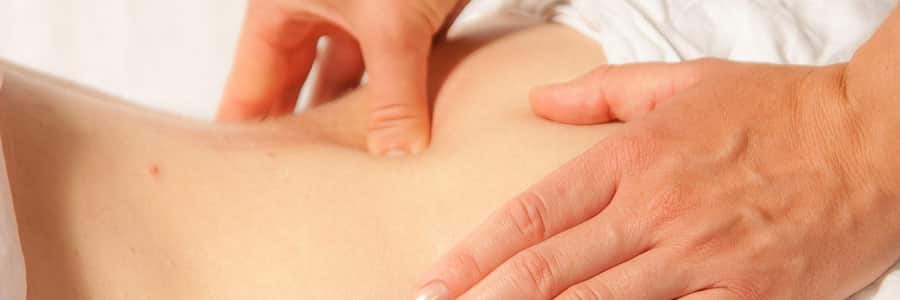
Low Back Pain Overview
It is common for patients to experience bouts of low back pain throughout their life. Although, the source (painful structure) of chronic (i.e., >3 months) low back pain that is persistent after injury or surgery is difficult to determine. Acute low back pain can develop into chronic pain for various reasons. There are also several management strategies for lumbar spine disorders. Through medical evaluation and treatment the reasons can be determined, leading to improvements in pain severity and improving mood and overall function.
Prevalence
Back pain is so common that it ranks the second most frequent medical complaint, second only to the common cold. This results in time off work and is the most common cause of disability in people under the age of 45 years old. In the US, the lifetime prevalence of low back pain is around 80%. The highest prevalence is people aged 45-64 years old.
Natural history
The natural history of acute (i.e., 0-4 days) lower back pain is similar to sciatica, which is pain and inflammation of the sciatic nerve in the thigh and leg, with 60% of people recovering in 1-3 weeks, 90% recovering in 6-8 weeks and 96% recovering in 12 weeks. While there are more serious cases of low back pain, for example cancer, these are uncommon and occur within less than 1% of patients.
Mechanisms
The cause of low back pain is the result of mechanical damage due to poor posture, a sitting based work lifestyle and inadequate conditioning. Other causes can be daily stresses, such as sneezing, coughing or bending over which can produce a herniated disc. Those who work sitting at a desk have a higher chance of herniating a disc.
While sitting, intradiscal pressure is greatest and the disc experiences pressure on the thinnest, least supported area of the annulus fibrosus, which is the outer supporting ligament of spinal discs. This results in disc bulging or herniation.
Mechanical low back pain can be referred to as pain secondary to injury, deformity of anatomic structure or overuse of a normal anatomic structure. Static loading of the spine (which is the extended period of sitting or standing), certain activities (such as vacuuming, sweeping and bending forward) can aggravate low back pain. This pain is alleviated when multidirectional forces, such as walking or when it is horizontal balances the spine.
98% of back pain cases are the cause of mechanical conditions, including; disc herniation, spinal stenosis, osteoarthritis, disc disease and back strain.
Management
Management of low back pain is evaluated through physical examination and the patient’s history. This information, in collaboration with specific guidelines, may result in an x-ray being arranged for some patients, however not all.
Most patients can start therapy without having had an x-ray, MRI or CT scan. Though, radiography is useful in determining alternations in the lumbar spine. Physicians use this data to formulate a diagnosis and develop a treatment plan.
Most patients will improve the severity of their low back pain through controlled physical activity, non-addictive anti-inflammatory medication and physical activity, and for some patients, muscle relaxants. Surgery is for patients who have not shown improvement with conservative therapy, and have unrelenting signs and symptoms of sciatica that are associated with a herniated disc, and are therefore best treated with surgery.
There’s no mistaking that chronic low back pain is a complex disorder that can be managed with a multidisciplinary approach. However, low back pain only affects a small number of patients.
Prevention
Prevention of low back pain starts with physical fitness and obesity and smoking, which correlates unfavourably with low back pain. Incidents of back pain disorders can be reduced with patient education, ergonomic intervention and increased physical activity.
Sport
Those who regularly exercise, at various levels, are less likely to experience spine injury and back pain disorders. This is due to the strength and flexibility of supporting structures, which include flexible gluteal and hamstring muscles and strong abdominal and lumbar paraspinal muscles for support.
A small amount of athletes, only 10%, experience problems involving the lumbar spine. Those athletes who compete in gymnastics and football have a higher chance of associated lumbar spine problems because of repetitive activities, such as twisting and bending motions. Most of these injuries are minor and respond effectively to treatment. Those athletes who train only on weekends or casually experience a higher risk of lumbar spine problems due to their fitness levels. It is recommended that conditioning and technique can assist in prevention.
Low back pain conditions and links
The following conditions are the most common causes of low back pain and help information about low back pain:








